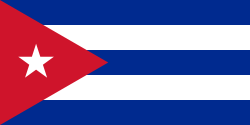
Simposio 4. Formación de profesionales competentes desde una perspectiva inclusiva y equitativa, por un desarrollo sostenible.
ART
VI Taller sobre “La Enseñanza de las Artes en la Educación Superior”.
Resumen
El programa de la disciplina Historia del Arte se estructura a partir de asignaturas específicas orientadas hacia la presentación de las coordenadas generales del pensamiento filosófico, ético, y estético universal, las expresiones culturales, literarias y artísticas más significativas de toda la historia de la humanidad, producidas en Europa, América Latina, Caribe y Cuba.
En este último se identifican los actores e instituciones que han conformado históricamente el Sistema del Arte. Sin embargo en él no se contempla el arte regional como objeto de estudio. Se vislumbra la producción artística con un marcada tendencia nacionalista, obviando el conocimiento de lo regional desde una perspectiva historiográfica que posibilité reflexiones sobre los procesos sociales y culturales locales.
La investigación, posibilita el conocimiento de la producción artística regional, lo cual favorece el tratamiento del contenido de la cultura local en los programas de las carreras de Gestión Sociocultural y Educación Artística. Desde los órdenes teóricos metodológico el tema de la pintura en Cuba de forma general se ha abordado por varios autores, destacándose los estudios de Guy Pérez Cisneros, Graciela Pogolotti y Adelaida de Juan. En Las Tunas destacan Borrego Rodríguez (1993), Quiala Socarrás (1996), (1998), Cruz (2006) y Cruz Núñez (2008) y Quiala Socarrás (2008).
Objetivos.
• Analizar e identificar artistas, obras, movimientos y estilos artísticos.
● Desarrollar aspectos perceptivos, emocionales, estéticos, sociales e intelectivos para el goce y la reflexión del Patrimonio Artístico, como parte formadora del bagaje cultural y la construcción de la identidad.
Abstract
The program of the Art History discipline is structured from specific subjects oriented towards the presentation of the general coordinates of universal philosophical, ethical, and aesthetic thought, the most significant cultural, literary, and artistic expressions in the entire history of humanity, Produced in Europe, Latin America, the Caribbean and Cuba.
In the latter, the actors and institutions that have historically shaped the Art System are identified. However, it does not contemplate regional art as an object of study. Artistic production is glimpsed with a marked nationalist tendency, ignoring the knowledge of the regional from a historiographical perspective that allowed reflections on local social and cultural processes.
The investigation makes possible the knowledge of the regional artistic production, which favors the treatment of the content of the local culture in the programs of the careers of Sociocultural Management and Artistic Education. From the methodological theoretical orders, the subject of painting in Cuba in a general way has been addressed by several authors, highlighting the studies of Guy Pérez Cisneros, Graciela Pogolotti and Adelaida de Juan. In Las Tunas, Borrego Rodríguez (1993), Quiala Socarrás (1996), (1998), Cruz (2001) and Cruz Núñez (2008) and Quiala Socarrás (2008) stand out.
Goals.
1. Analyze and identify artists, works, movements and artistic styles.
2. Develop perceptual, emotional, aesthetic, social and intellectual aspects for the enjoyment and reflection of the Artistic Heritage, as a forming part of the cultural baggage and the construction of identity.
Sobre el ponente

Liudmila Quiala Socarrás
